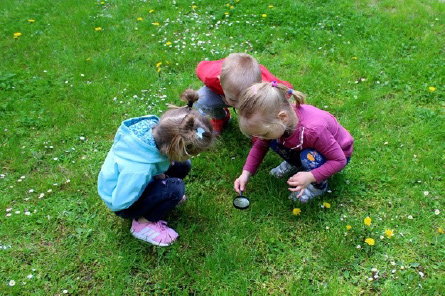Grade Level: Kindergarten
Content area: Science and Visual Arts
Standard identifiers: K-ESS2-2; K.VA:Cr2.3
Objectives: Students will:
- Illustrate how plants and animals interact in the world around them.
- Observe and investigate the local natural environment.
- Use evidence to describe how the environment changes due to their environment.
Materials and Resources:
- Paper, crayons or markers, pencils, erasers
- Nature Journal Printable Worksheet in English
- Nature Journal Printable Worksheet in Spanish
- MVC’s Learning Module #8 for teacher reference
Assessment (informal):
- Students draw an element from the environment around them.
- Students write about their observations, questions they have, and predictions about how the element will change over time.
Strategies for English Language Learners and Learners with Special Needs:
- Give the instructions verbally step-by-step.
- Provide the worksheet in Spanish if the students’ primary language is Spanish. (see below)
- Provide an example worksheet.
Instructional Sequence:
Introduction and explanation to students about the purpose of the lesson (3 minutes)
- Ask the students: “Who likes to be outside?” “Who likes to learn?” Say “We can do both! We can learn about nature by spending time outside and paying special attention to what’s around us. We are going to focus on a plant or animal that we think is super interesting and draw what we see.” Give the students some ideas of how plants and animals interact with each other: “Do you see insects or animals eating plants? Is the wind moving the plants around? Is anything coming off of the plants?”
Teacher modeling (5 minutes)
- Go outside to an area where students can observe plants, insects, and animals. (Don’t forget the worksheet and coloring materials!) Maybe use your hands to make binoculars and look around. Tell the students what you will focus on (a particular plant or animal) and say you will draw it in its environment, meaning including the plants around it. Then, you will get closer to it and draw it up close, without the other plants. [It may be helpful to have a completed example to show the students the difference between zoomed-out and zoomed-in.]
Guided practice (5 minutes)
- Tell the students to explore and find a plant or animal they want to focus on. Walk around and ask the students what their subject of focus is. Make sure they understand to focus on something specific.
Practice (independent) (15 minutes)
- Students spend time independently drawing their subjects and completing the worksheet.
Closure (5-10 minutes)
- Have students share their work in small groups. Ask them to say what the plant or animal was doing and what else they want to know about it.
Monitoring for student learning/understanding:
- Check that students’ versions of “zoom-out” and “zoom-in” on the worksheet are different.
Take reflection notes on how the lesson went for your future reference.


